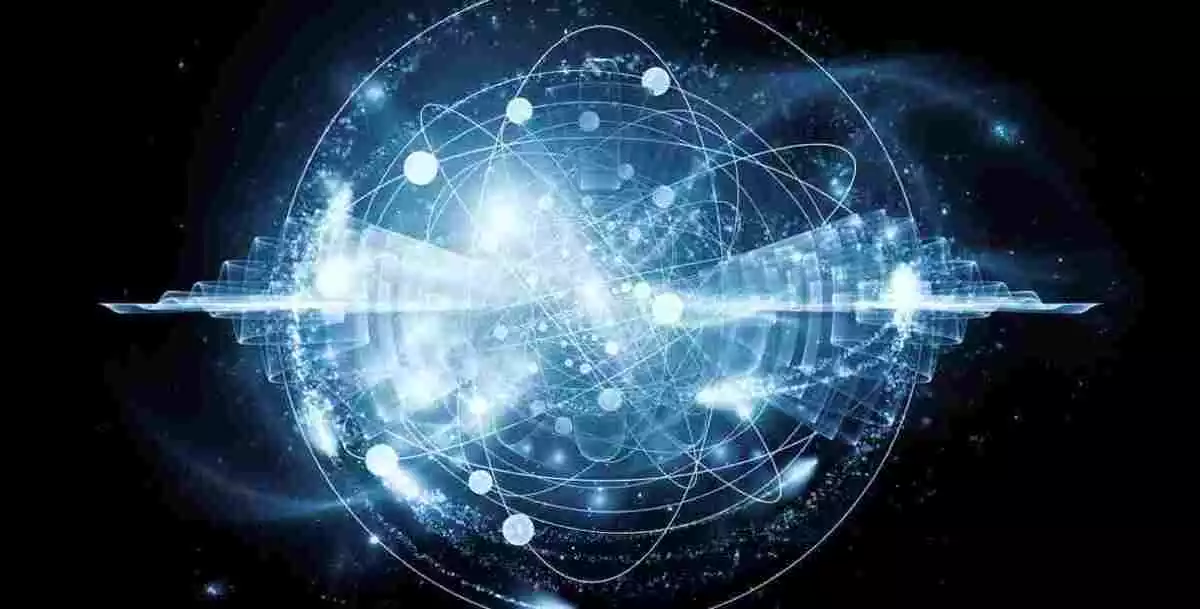
Quantum Physics & Spirituality: Science of the Inexplicable?
The application of science into human and spiritual experience

“Science without religion is lame, science without religion is blind”. This was a quote by Albert Einstein, the great pioneer of modern-day science whose contributions placed the great certainties of physics under a judging light, and opened up a new horizon in the science of multiple possibilities that we know as quantum physics.
As the years have recently gone by, the boundary between science and spirituality has started to fade, thus introducing a new perspective by which everything that was considered pure speculation becomes a likely reality.
Can quantum physics explain how to time travel? Are telepathy and telekinesis possible? Would it be that crazy to abandon our body and go on an astral trip or visit our other self?
- You might be interested: The secret of the Law of Attraction (Rhonda Byrne's The Secret)
What is quantum physics?
In a box, there's a cat and a device which, over the next minute, has a 50% chance of bursting open and killing the cat, and a 50% chance of not doing anything. Until we see inside the box, we won't know if the cat is alive or dead, and when we look, he can only be in one of those two states (never both).
Quantum physics is the branch of science that explains that, in that minute we're not looking inside the box, there's a superposition where the cat is both alive and dead, and only our observation forces nature's actions towards one resolution or the other. In simpler words, it's the science of multiple possibilities.
This story that allows us to understand what quantum physics is, is a 1935 experiment called Schrödinger's cat. But this story brought up an even more intriguing doubt: is there a single reality that comes alive when we observe or are there two possibilities coexisting in a larger multiverse?
The foundations of quantum physics are based on two statements. One, that particles exchange energy in full multiples of a minimum possible amount (energy quantum). The other, that their theoretical position is given by a probability function by which they don't offer certainty, but a possibility instead.
Quantum physics appears when the principles of traditional physics start bringing up doubts about some apparently inexplicable phenomena, and it is developed along with Albert Einstein's revolutionary theory of relativity. From then on, the idea that energy is transmitted and spread continuously changes, and the thought starts to revolve around minimal amounts (quantum).
The other great discovery in that area was the wave-particle duality, by which light and matter can have particle qualities as well as wave properties. That progress was very useful for electronics, computing and astronomy, for instance, but it also opened endless possibilities for spirituality.
Science vs spirituality
Many people think that spirituality and science are incompatible. While spirituality is based on a supèrior reality that exists in itself, science only sees as reality what it can prove empirically.
However, the barrier dividing both disciplines is much more blurred than many might think. For centuries on end, spirituality has sought statements that are relatively scientific -that is, able to be proven- about the existence of the soul. In its turn, science fell into the collapse of its own beliefs at a certain point.
Nowadays, science and spirit have the same goals: finding the individual's new potential and overcoming old self-imposed limits. Thus, for instance, while science attempts to prove that there are black holes in the universe where the space-time reality slides through, spirituality tries to explore new chances of individuals overcoming their space, time and body limitations.
Revolution came along with theosophy, a pseudoscience born in the late 19th century which compiled teachings and beliefs based on the existence of an eternal wisdom that already existed and lay under all religious beliefs.
In our day and age, the mixing of rising spiritism with religions such as Buddhism and Hinduism brought on parapsychology and the interest about finding the boundaries of mental power, as an instrument to overcome bodily limits. Through the decades and until today, there were supposed experiments that attempted to make all those beliefs a reality.
We are energy: the new potential of self
Although many of those experiments were proven to be a fraud, there's been a much more serious research and investigation line that has proven that human beings are full of energy, and that this energy behaves in accordance to scientific laws, quantum physics included.
Therefore, it isn't a surprise that more solid theories about abandoning the body to time travel, using black holes in space to break space-time boundaries, or using the mind's resources to penetrate the spirit and release its energy, come from science and are increasingly accepted by society.
One of those contributions is Jean-Pierre Garnier Malet's time doubling theory, according to which there are two-time frames: one where we live in the present, and another to which we can travel in the REM sleep phase to visit past and future lives. Garnier Malet is a scientist, and he applied the discoveries of quantum physics to human existence.
Another link between spirituality and science are the thoughts of renowned astrophysicist Stephen Hawking about the possibility of space-time traveling through black holes in space. It's not such a crazy idea if we consider Einstein's equations and the tunnels connecting points across space and time.